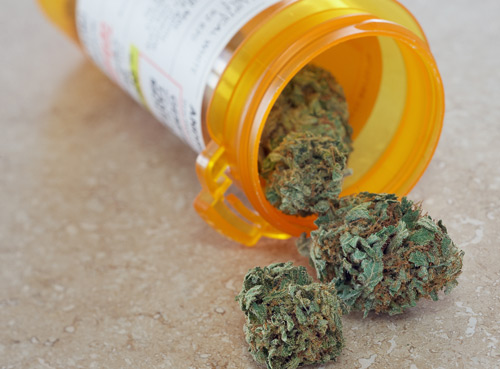In 2014, more people died from drug overdoses than at any other time in U.S. history, with 60% of fatalities involving opioid drugs. Moreover, estimates point to between 26 and 36 million people abusing opioids worldwide, with roughly 2.1 million people in the U.S. suffering from substance use disorders related to prescription opioid pain relievers. Addiction to opioids, such as heroin, morphine, and prescription pain relievers, is notoriously difficult to overcome as withdrawal symptoms are debilitating and often lead to re-use of the addictive compounds.
Now, a neurobiologist at the Icahn School of Medicine at Mount Sinai has just released data from a small human pilot study that shows cannabinoids, extracts of cannabis legally sold as medical marijuana, could reduce cravings and ease withdrawal symptoms in heroin users. The findings from this new study were published recently in Trends in Neuroscience in an article entitled “Cannabidiol: Swinging the Marijuana Pendulum From ‘Weed’ to Medication to Treat the Opioid Epidemic.”
While both cannabinoids and opioids regulate the perception of pain, the two drugs affect different parts of the brain and how the sensation is communicated from neuron to neuron. Over the years, researchers have found that this means cannabinoids, for example, have a stronger effect on inflammation-based chronic pain. Conversely, opioids are particularly good at relieving acute pain, which is why they are used in surgery. However, the problem is that opioids can quickly lead to a deadly addiction.
“If you look at both drugs and where their receptors are, opioids are much more dangerous, in part because of the potential for overdose—the opioid receptors are very abundant in the brainstem area that regulates our respiration, so they shut down the breathing center if opioid doses are high,” explained senior study investigator Yasmin Hurd, Ph.D., professor and director of the Center for Addictive Disorders within the Mount Sinai Behavioral Health System. “Cannabinoids don’t do that. They have a much wider window of therapeutic benefit without causing an overdose in adults.”
In recent years, animal studies have supported the hypothesis that cannabinoids could have long-lasting therapeutic effects. A specific cannabinoid, cannabidiol, has been shown to reduce heroin cravings in animals more than a week after abstinence and seems to restore some of the neurobiological damage induced by opioid use. In the current study, Dr. Hurd mirrored the findings seen in rodents. Interestingly, she found that cannabidiol particularly helped to relieve anxiety related to cravings in heroin users abstaining from use.
Unfortunately, politicians are only now beginning to acknowledge that an epidemic of opioid overdoses is taking place across the United States, particularly in suburban and rural areas, and the National Institute on Drug Abuse is asking researchers to think creatively about new strategies for pain relief. Over the years, marijuana has been a neglected option due to heavy restrictions on studying its effects in humans. While there has been a growing interest by the scientific community in cannabinoids since the legalization of medical marijuana, there is still much researchers don’t know about how it could be used therapeutically, despite at least a million people having prescriptions.
“We have to be open to marijuana because there are components of the plant that seem to have therapeutic properties, but without empirical-based research or clinical trials, we’re letting anecdotes guide how people vote and policies that are going to be made,” Dr. Hurd concluded. “It’s one of the first times in our history that we’re making laypeople and politicians decide whether things are medicinal or not. If we want to say something is medical marijuana, we have to prove that it is medicinal.”


